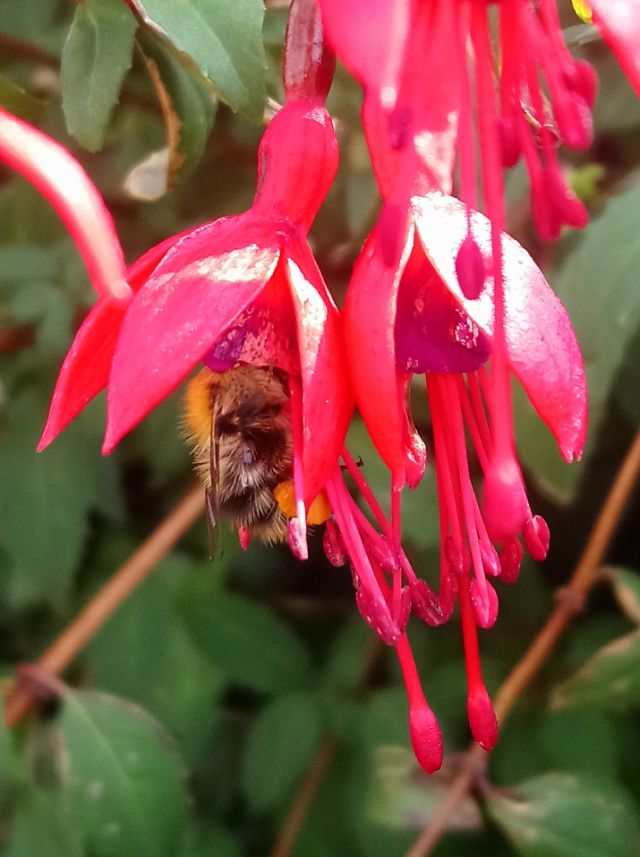Catching the thief: Nectar robbing behaviour by bumblebees on naturalised Fuchsia magellanica in Ireland
DOI:
https://doi.org/10.26786/1920-7603(2021)620Keywords:
Bumblebee behaviour, nectar robbing, competition, pollination, floral larcenyAbstract
Fuchsia magellanica (Ongaraceae) is a plant with a traditionally ornithopholous pollination system, pollinated primarily by hummingbirds in its native range. As a naturalised alien plant in Ireland, F. magellanica is visited largely by bumblebees, with evidence for nectar robbing behaviour of the long-tubed flowers. We aimed to investigate nectar robbing behaviour of bumblebees on F. magellanica, and in particular whether floral and pollinator traits (size) determined likelihood of nectar robbing. While F. magellanica was visited by a number of bumblebee species, only two with shorter tongue lengths were observed to rob nectar from flowers. Although there was no observed relationship between intra-specific bee body size and nectar robbing behaviour, nectar robbing was observed most frequently in the site with the highest number of bees. Proportions of robbed flowers were low overall and varied between populations, but there was a significant relationship between flower size and whether it was nectar robbed with larger flowers robbed more often. Our work suggests that floral size determines whether a flower-visitor will choose to nectar rob or not in this system. Nectar robbing may also be related to bee density which could suggest this behaviour is driven by competition for resources, or that it is learnt by observing other bees.

Additional Files
Published
How to Cite
Issue
Section
License
Copyright (c) 2021 Dara Anne Stanley, Emmeline Cosnett

This work is licensed under a Creative Commons Attribution 4.0 International License.
JPE is an open access journal which means that all content is freely available without charge to the user or his/her institution.
Authors who publish with this journal agree to the following terms:
1) Authors retain copyright and grant the journal right of first publication with the work simultaneously licensed under a Creative Commons Attribution License that allows others to share the work with an acknowledgement of the work's authorship and initial publication in this journal.
2) Authors are able to enter into separate, additional contractual arrangements for the non-exclusive distribution of the journal's published version of the work (e.g., post it to an institutional repository or publish it in a book), with an acknowledgement of its initial publication in this journal.
3) Authors are permitted and encouraged to post their work online (e.g., in institutional repositories or on their website) prior to and during the submission process, as it can lead to productive exchanges, as well as earlier and greater citation of published work (See The Effect of Open Access).
To assure a broader targeted audience, content will be included into databases (such as EBSCO) and directories (such as DOAJ).











